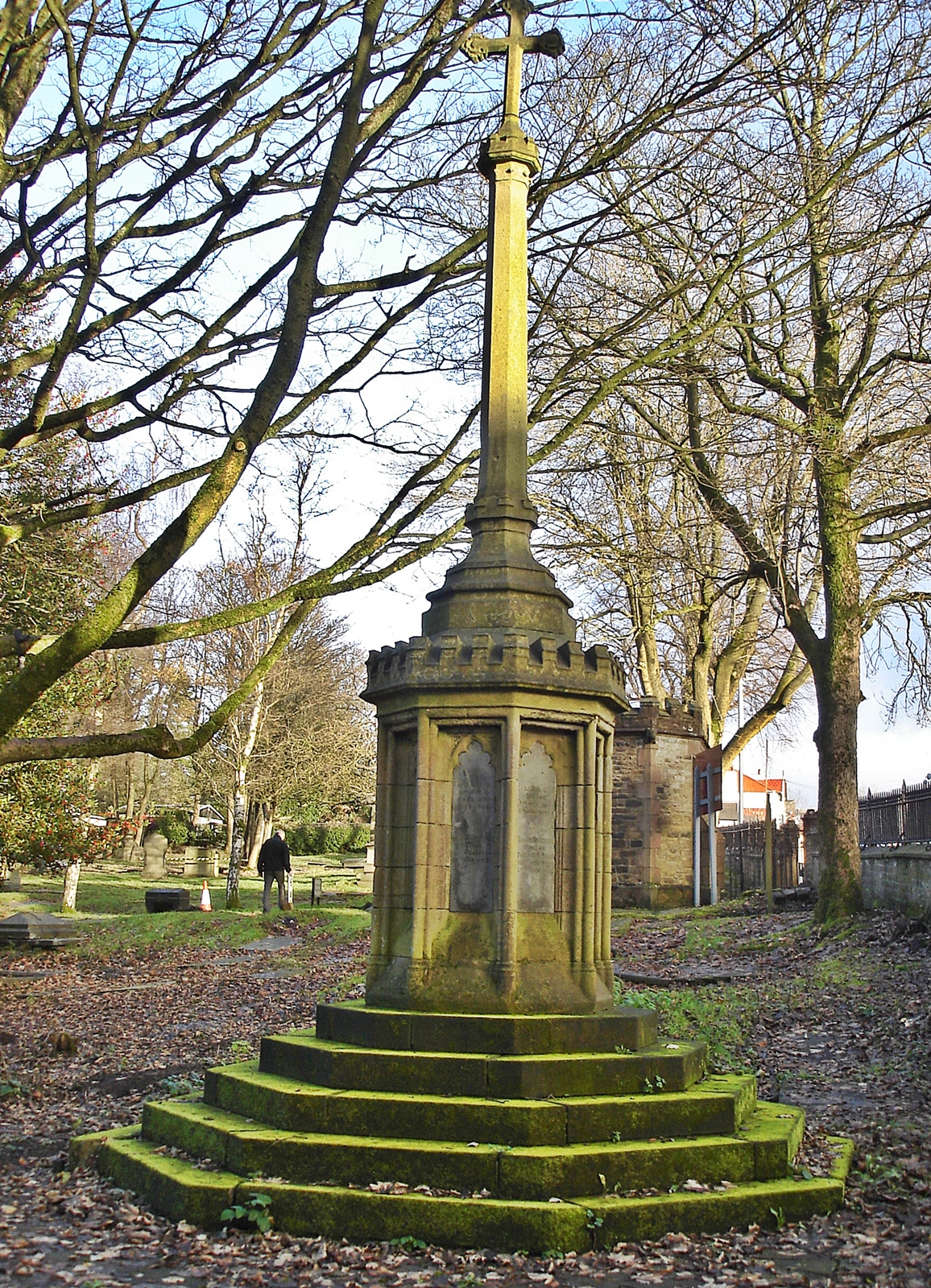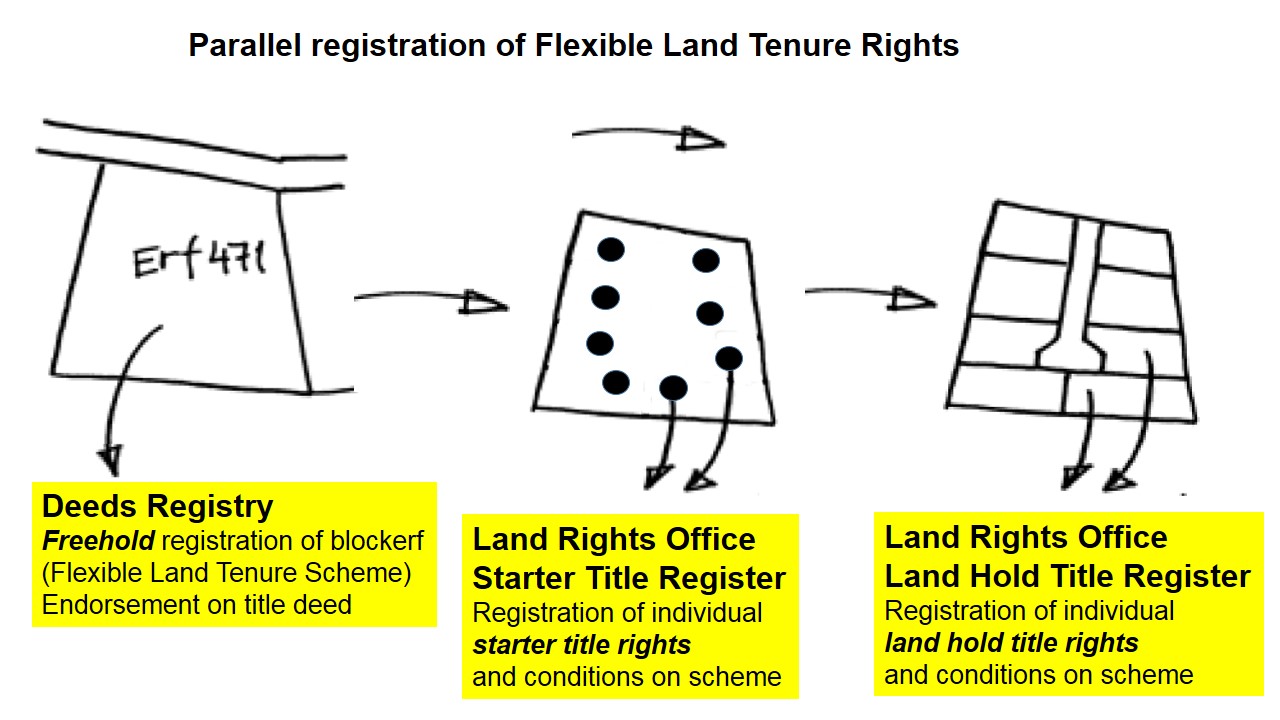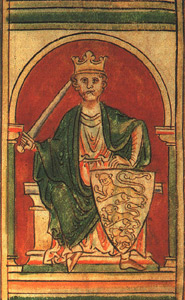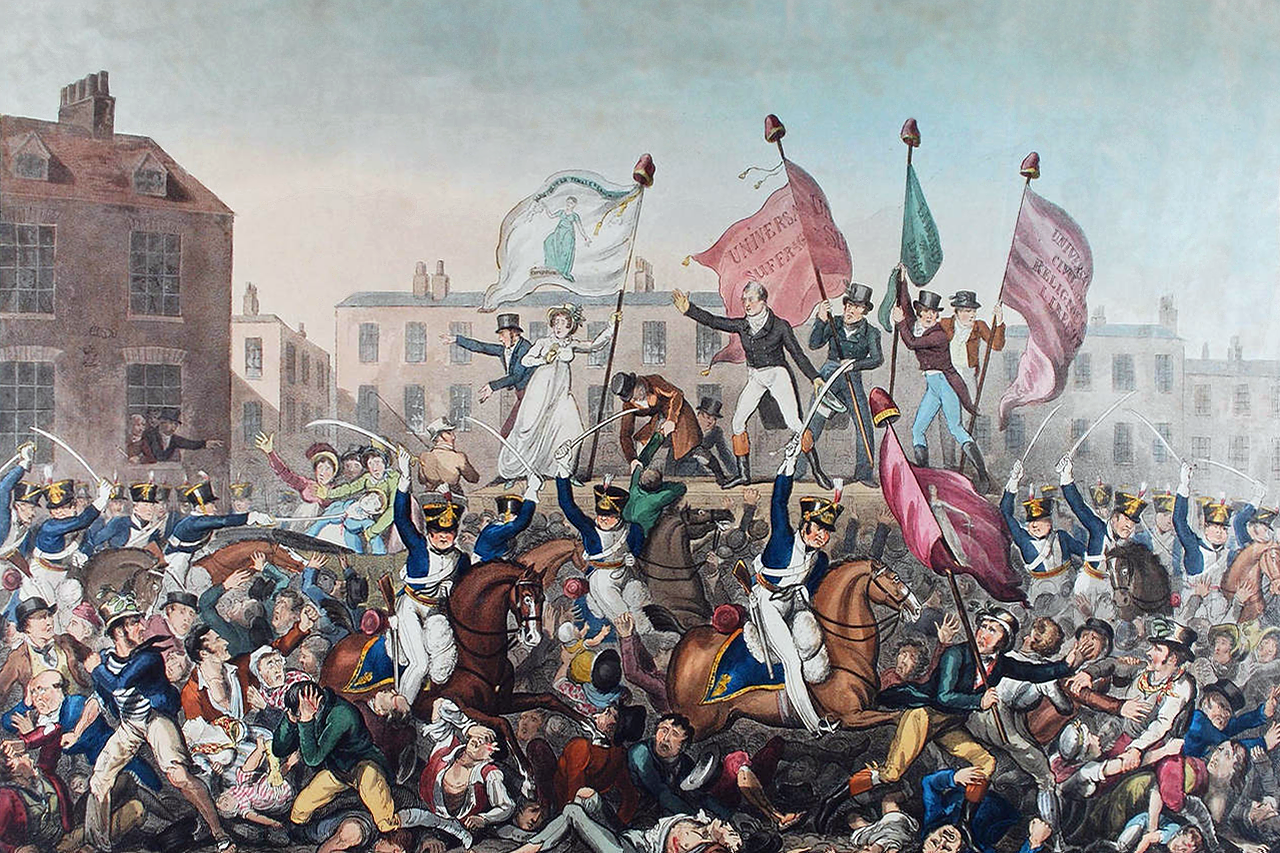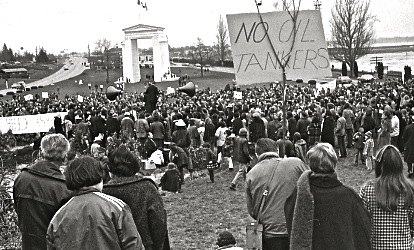|
William Hulton
William Hulton (23 October 1787 – 30 March 1864) was an English landowner, magistrate and collier who lived at Hulton Park, in the historic county of Lancashire, England. The Hultons owned the estate since the late-12th century. Biography William Hulton was the son of William Hulton and Jane (née Brooke). He was educated at Brasenose College, Oxford. In 1808 he married his cousin Maria Ford with whom he had 13 children, 10 of whom survived to maturity. In 1811 he was appointed High Sheriff of Lancashire. In this capacity he ordered the arrest of 12 men, Luddites, for arson at Westhoughton Mill in Westhoughton town centre. Four of the offenders were hanged outside Lancaster Castle, including a boy aged 12. Hulton gained a reputation as being tough on crime and political dissent and in 1819 was made chairman of the Lancashire and Cheshire Magistrates, a body set up for dealing with the civil unrest endemic in the area. He was also Constable of Lancaster Castle. In 1819 ... [...More Info...] [...Related Items...] OR: [Wikipedia] [Google] [Baidu] |
Land Tenure
In common law systems, land tenure, from the French verb "tenir" means "to hold", is the legal regime in which land owned by an individual is possessed by someone else who is said to "hold" the land, based on an agreement between both individuals. It determines who can use land, for how long and under what conditions. Tenure may be based both on official laws and policies, and on informal local customs (insofar higher law does allow that). In other words, land tenure implies a system according to which land is held by an individual or the actual tiller of the land but this person does not have legal ownership. It determines the holder's rights and responsibilities in connection with their holding. The sovereign monarch, known in England as The Crown, held land in its own right. All land holders are either its tenants or sub-tenants. ''Tenure'' signifies a legal relationship between tenant and lord, arranging the duties and rights of tenant and lord in relationship to the land. Ov ... [...More Info...] [...Related Items...] OR: [Wikipedia] [Google] [Baidu] |
Magistrate (England And Wales)
Magistrates are trained volunteers, selected from the local community, who deal with a wide range of criminal and civil proceedings. They are also known as Justices of the Peace. In the adult criminal court, magistrates decide on offences which carry up to twelve months in prison, or an unlimited fine. Magistrates also sit in the family court where they help resolve disputes that involve children, and in the youth court which deals with criminal matters involving young people aged 10-17. Established over 650 years ago, the magistracy is a key part of the judiciary of England and Wales, and it is a role underpinned by the principles of 'local justice' and 'justice by one's peers'. Magistrates typically sit as a bench of three, mixed in gender, age and ethnicity where possible, to bring a broad experience of life to the bench. They can sit alone to hear warrant applications or deal with uncontested matters heard under the single justice procedure. All members of the bench have e ... [...More Info...] [...Related Items...] OR: [Wikipedia] [Google] [Baidu] |
Safe Seat
A safe seat is an electoral district (constituency) in a legislative body (e.g. Congress, Parliament, City Council) which is regarded as fully secure, for either a certain political party, or the incumbent representative personally or a combination of both. In such seats, there is very little chance of a seat changing hands because of the political leanings of the electorate in the constituency concerned and/or the popularity of the incumbent member. The opposite (i.e. more competitive) type of seat is a marginal seat. The phrase tantamount to election is often used to describe winning the dominant party's nomination for a safe seat. Definition There is a spectrum between safe and marginal seats. Safe seats can still change hands in a landslide election, such as Enfield Southgate being lost by the Conservatives (and potential future party leader Michael Portillo) to Labour at the 1997 UK general election, whilst other seats may remain marginal despite large national swi ... [...More Info...] [...Related Items...] OR: [Wikipedia] [Google] [Baidu] |
Peterloo Massacre
The Peterloo Massacre took place at St Peter's Field, Manchester, Lancashire, England, on Monday 16 August 1819. Fifteen people died when cavalry charged into a crowd of around 60,000 people who had gathered to demand the reform of parliamentary representation. After the end of the Napoleonic Wars in 1815 there was an acute economic slump, accompanied by chronic unemployment and harvest failure due to the Year Without a Summer, and worsened by the Corn Laws, which kept the price of bread high. At that time only around 11 percent of adult males had the vote, very few of them in the industrial north of England, which was worst hit. Reformers identified parliamentary reform as the solution and a mass campaign to petition parliament for manhood suffrage gained three-quarters of a million signatures in 1817 but was flatly rejected by the House of Commons. When a second slump occurred in early 1819, radical reformers sought to mobilise huge crowds to force the government to back ... [...More Info...] [...Related Items...] OR: [Wikipedia] [Google] [Baidu] |
15th The King's Hussars
The 15th The King's Hussars was a cavalry regiment in the British Army. First raised in 1759, it saw service over two centuries, including the First World War, before being amalgamated with the 19th Royal Hussars into the 15th/19th The King's Royal Hussars in 1922. History Early wars The regiment was raised in the London area by George Augustus Eliott, 1st Baron Heathfield as Elliots Light Horse as the first of the new regiments of light dragoons in 1759. It was renamed the 15th Regiment of (Light) Dragoons in 1760. The regiment landed in Bremen in June 1760 for service in the Seven Years' War. The regiment were largely responsible for the victory, suffering 125 of the 186 allied casualties at the Battle of Emsdorf in July 1760. Lieutenant Colonel William Erskine, commanding the regiment, presented King George III with 16 colours captured by his regiment after the battle. During the battle the French commander, Major-General Christian-Sigismund von Glaubitz, was taken priso ... [...More Info...] [...Related Items...] OR: [Wikipedia] [Google] [Baidu] |
Guy L'Estrange
Guy or GUY may refer to: Personal names * Guy (given name) * Guy (surname) * That Guy (...), the New Zealand street performer Leigh Hart Places * Guy, Alberta, a Canadian hamlet * Guy, Arkansas, US, a city * Guy, Indiana, US, an unincorporated community * Guy, Kentucky, US, an unincorporated community * Guy, Texas, US, an unincorporated community * Guy Street, Montreal, Canada Art and entertainment Films * ''Guy'' (1997 film) (American, starring Vincent D'Onofrio) * ''Guy'' (2018 film) (French, starring Alex Lutz) * '' That Guy... Who Was in That Thing'' (2012), a documentary film * Free Guy (2021), an action comedy film Music * ''Guy'' (album), debut studio album of Guy (band) 1988 * Guy (band), an American R&B group * " G.U.Y.", a 2014 song by Lady Gaga from the album ''Artpop'' Transport * Guy (sailing), rope to control a spinnaker on a sailboat * Air Guyane Express, ICAO code GUY * Guy Motors, a former British bus and truck builder * ''Guy'' (ship, ... [...More Info...] [...Related Items...] OR: [Wikipedia] [Google] [Baidu] |
Demonstration (political)
A political demonstration is an action by a mass group or collection of groups of people in favor of a political or other cause or people partaking in a protest against a cause of concern; it often consists of walking in a mass march formation and either beginning with or meeting at a designated endpoint, or rally, in order to hear speakers. It is different from mass meeting. Actions such as blockades and sit-ins may also be referred to as demonstrations. Demonstrations can be nonviolent or violent (usually referred to by participants as " militant"), or can begin as nonviolent and turn violent depending on the circumstances. Sometimes riot police or other forms of law enforcement become involved. In some cases, this may be in order to try to prevent the protest from taking place at all. In other cases, it may be to prevent clashes between rival groups, or to prevent a demonstration from spreading and turning into a riot. History The term has been in use since the mid ... [...More Info...] [...Related Items...] OR: [Wikipedia] [Google] [Baidu] |
Sabre
A sabre ( French: �sabʁ or saber in American English) is a type of backsword with a curved blade associated with the light cavalry of the early modern and Napoleonic periods. Originally associated with Central European cavalry such as the hussars, the sabre became widespread in Western Europe during the Thirty Years' War. Lighter sabres also became popular with infantry of the early 17th century. In the 19th century, models with less curving blades became common and were also used by heavy cavalry. The military sabre was used as a duelling weapon in academic fencing in the 19th century, giving rise to a discipline of modern sabre fencing (introduced in the 1896 Summer Olympics) loosely based on the characteristics of the historical weapon in that it allows for cuts as well as thrusts. Etymology The English ''sabre'' is recorded from the 1670s, as a direct loan from French, where the ''sabre'' is an alteration of ''sable'', which was in turn loaned from German ''Säbe ... [...More Info...] [...Related Items...] OR: [Wikipedia] [Google] [Baidu] |
Yeomanry Cavalry
The Yeomanry Cavalry was the mounted component of the British Volunteer Corps, a military auxiliary established in the late 18th century amid fears of invasion and insurrection during the French Revolutionary Wars. A yeoman was a person of respectable standing, one social rank below a gentleman, and the yeomanry was initially a rural, county-based force. Members were required to provide their own horses and were recruited mainly from landholders and tenant farmers, though the middle class also featured prominently in the rank and file. Officers were largely recruited from among the nobility and landed gentry. A commission generally involved significant personal expense, and although social status was an important qualification, the primary factor was personal wealth. From the beginning, the newly rich, who found in the yeomanry a means of enhancing their social standing, were welcomed into the officer corps for their ability to support the force financially. Urban recruitme ... [...More Info...] [...Related Items...] OR: [Wikipedia] [Google] [Baidu] |
Henry Hunt (politician)
Henry "Orator" Hunt (6 November 1773 – 13 February 1835) was a British radical speaker and agitator remembered as a pioneer of working-class radicalism and an important influence on the later Chartist movement. He advocated parliamentary reform and the repeal of the Corn Laws. He was the first member of parliament to advocate for women's suffrage; in 1832 he presented a petition to parliament from a woman asking for the right to vote. Background Hunt was born on 6 November 1773 in Upavon, Wiltshire. Career Hunt became a prosperous farmer. He was first drawn into radical politics during the Napoleonic Wars, becoming a supporter of Francis Burdett. His talent for public speaking became noted in the electoral politics of Bristol, where he denounced the complacency of both the Whigs and the Tories, and proclaimed himself a supporter of democratic radicalism. It was thanks to his particular talents that a new programme beyond the narrow politics of the day made steady prog ... [...More Info...] [...Related Items...] OR: [Wikipedia] [Google] [Baidu] |
Political Demonstration
A political demonstration is an action by a mass group or collection of groups of people in favor of a political or other cause or people partaking in a protest against a cause of concern; it often consists of walking in a mass march formation and either beginning with or meeting at a designated endpoint, or rally, in order to hear speakers. It is different from mass meeting. Actions such as blockades and sit-ins may also be referred to as demonstrations. Demonstrations can be nonviolent or violent (usually referred to by participants as " militant"), or can begin as nonviolent and turn violent depending on the circumstances. Sometimes riot police or other forms of law enforcement become involved. In some cases, this may be in order to try to prevent the protest from taking place at all. In other cases, it may be to prevent clashes between rival groups, or to prevent a demonstration from spreading and turning into a riot. History The term has been in use since the mid-19 ... [...More Info...] [...Related Items...] OR: [Wikipedia] [Google] [Baidu] |
St Peter's Square, Manchester
St Peter's Square is a public square in Manchester city centre, England. The north of the square is bounded by Princess Street and the south by Peter Street. To the west of the square is Manchester Central Library, Midland Hotel and Manchester Town Hall Extension. The square is home to the Manchester Cenotaph, the ''Emmeline Pankhurst'' statue, and St Peter's Square Metrolink tram stop and incorporates the Peace Garden. In 1819, the area around the square was the site of the Peterloo Massacre. From 2010 to 2017, the square underwent significant redevelopment which entailed the restoration of Central Library and attached Library Walk link, the relocation of the Cenotaph to the rear of Manchester Town Hall, the creation of a new extended tram stop and the construction of two new office blocks to the south of the square; One St Peter's Square and Two St Peter's Square. History The area around St Peter's Square, then known as St Peter's Field, was the site of the 1819 Pet ... [...More Info...] [...Related Items...] OR: [Wikipedia] [Google] [Baidu] |
